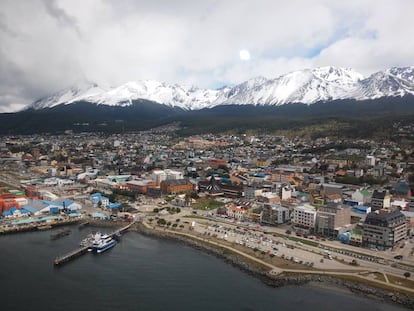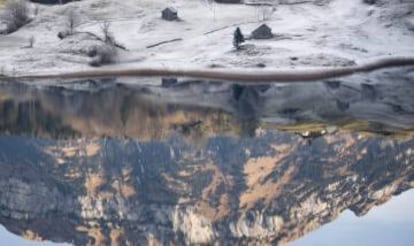Welcome to the other solstice as summer hits South America
While Europe darkens, December 21 is the longest day of the year in the Southern Hemisphere
On Wednesday, December 21, the Southern Hemisphere will live through its longest day before its shortest night of the year. The solstice marks the beginning of summer, a date venerated and celebrated by ancient cultures. This year, the sun will reach its highest position in the sky at the Tropic of Capricorn, the southernmost point on the planet where the noon sun is directly overhead, at 7.44am (GMT-3) in Argentina.

The summer in the Southern Hemisphere will last 88 days and 23 hours and it will end on March 20. Meanwhile, today, the Northern Hemisphere will experience its shortest day and longest night of the year.
The solstice is the moment of the year when the sun reaches its highest or lowest point in the sky. This phenomenon does not occur at the same hour every year because it takes the Earth a total of 365.2425 days to orbit the Sun, a difference our calendar makes up for every four years with a leap year.
The solstice is due to the inclination of Earth’s axis, which is tilted at a 23.5 degree angle with respect to the Sun. This peculiarity prevents the days from being exactly the same length and creates seasons that the Northern and Southern Hemispheres experience at opposite times of the year. If the Earth’s axis were perpendicular to the Sun, the latter would always rise exactly in the East and set in the West and night and day would always be of equal length, a phenomenon that only takes place twice a year during the Spring and Fall Equinoxes.

The Tropic of Capricorn is an imaginary line that cuts across Chile, passes through the northern parts of Argentina and Paraguay and southern Brazil.
During the summer solstice, the Sun does not drop below the horizon in the Antarctic Circle. Instead, it spins around the observer until it reaches its highest point, a phenomenon known as Midnight Sun since it never gets completely dark.
In Buenos Aires, the longest day of the year will begin at 5.37 am with the first rays of sunlight and end at 8.06pm. The sun will be above the horizon on December 21 for 15 hours and 29 minutes. Then the days will progressively get shorter until autumn arrives.
English version by Dyane Jean François.
Tu suscripción se está usando en otro dispositivo
¿Quieres añadir otro usuario a tu suscripción?
Si continúas leyendo en este dispositivo, no se podrá leer en el otro.
FlechaTu suscripción se está usando en otro dispositivo y solo puedes acceder a EL PAÍS desde un dispositivo a la vez.
Si quieres compartir tu cuenta, cambia tu suscripción a la modalidad Premium, así podrás añadir otro usuario. Cada uno accederá con su propia cuenta de email, lo que os permitirá personalizar vuestra experiencia en EL PAÍS.
¿Tienes una suscripción de empresa? Accede aquí para contratar más cuentas.
En el caso de no saber quién está usando tu cuenta, te recomendamos cambiar tu contraseña aquí.
Si decides continuar compartiendo tu cuenta, este mensaje se mostrará en tu dispositivo y en el de la otra persona que está usando tu cuenta de forma indefinida, afectando a tu experiencia de lectura. Puedes consultar aquí los términos y condiciones de la suscripción digital.
More information
Archived In
Últimas noticias
From Andorra to Gibraltar, a black market for Ozempic exploits its success: ‘They’re the most sought-after products in the world’
Magnets in their heads: How some animals guide themselves using the Earth’s magnetic field
From Hungary’s Orbán to Chile’s Kast: How Trump helps turbo charge the far right
The brief rise and retreat of Generation Z in Mexico
Most viewed
- Why we lost the habit of sleeping in two segments and how that changed our sense of time
- Charles Dubouloz, mountaineering star, retires at 36 with a farewell tour inspired by Walter Bonatti
- Venezuela faces its most tense Christmas yet
- CBS in crisis after pulling a report on Trump’s deportations to El Salvador (which later leaked online)
- Bukele clan fumes over investigation exposing their new wealth










































